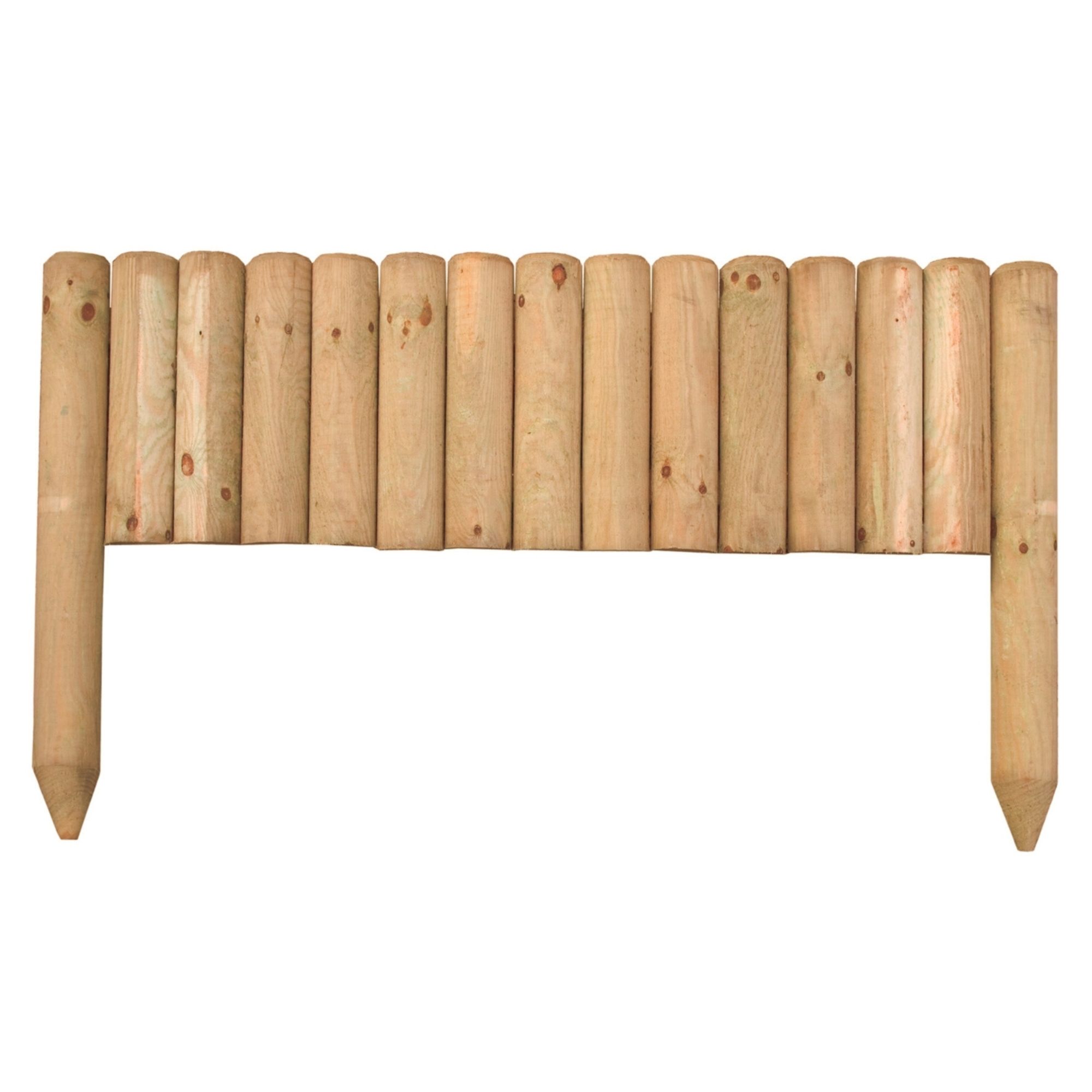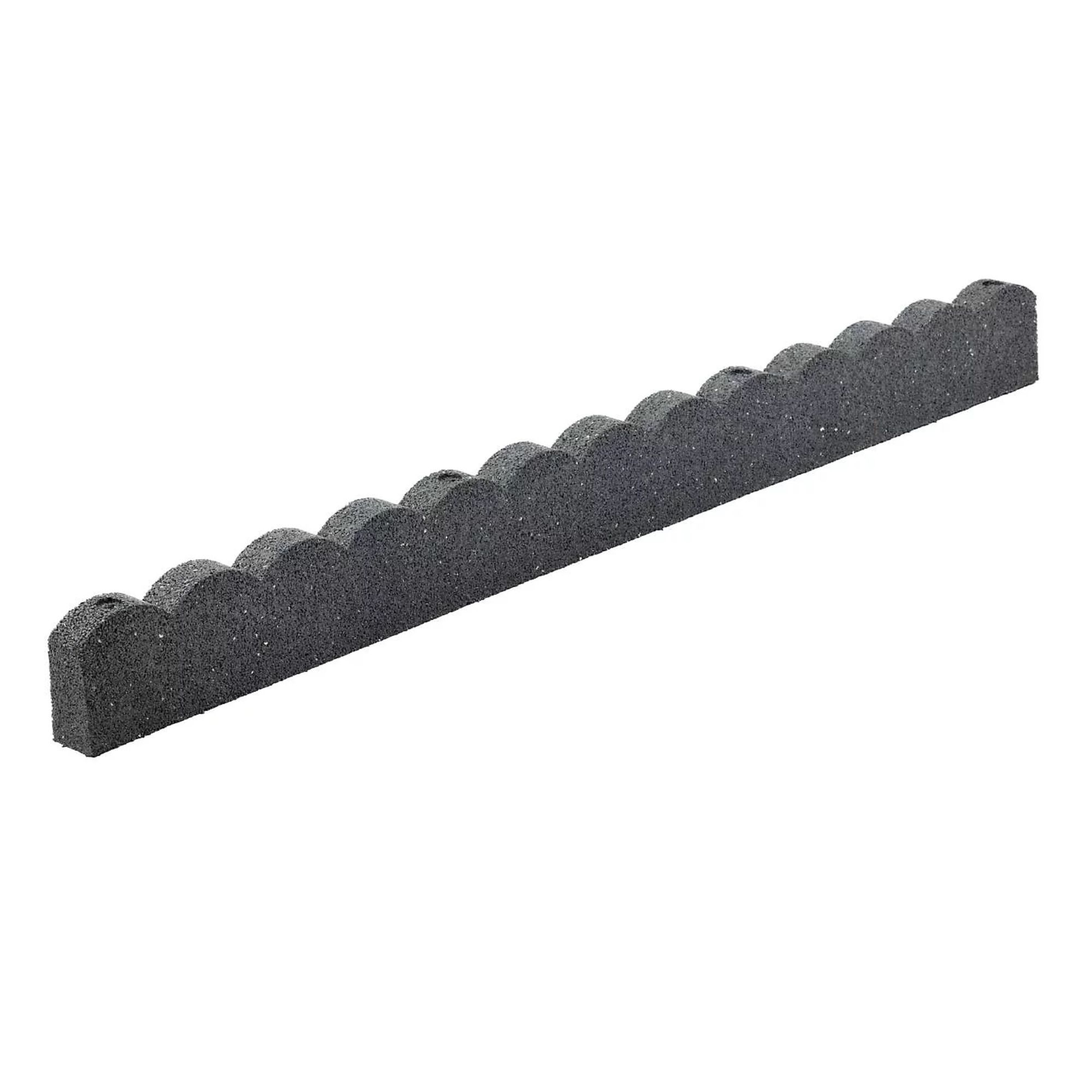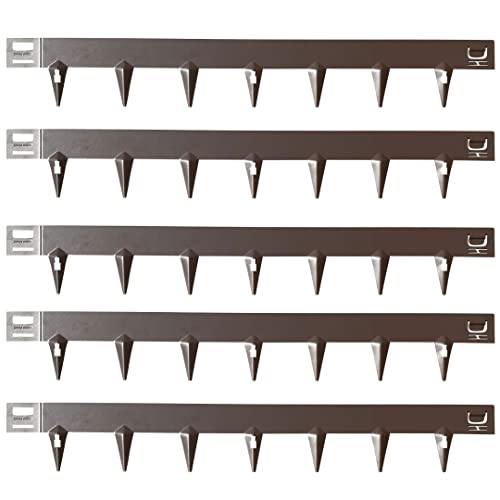18 garden border ideas to beautifully frame your space, from planting schemes to landscaping tips
Our favourite garden border ideas, all in one place

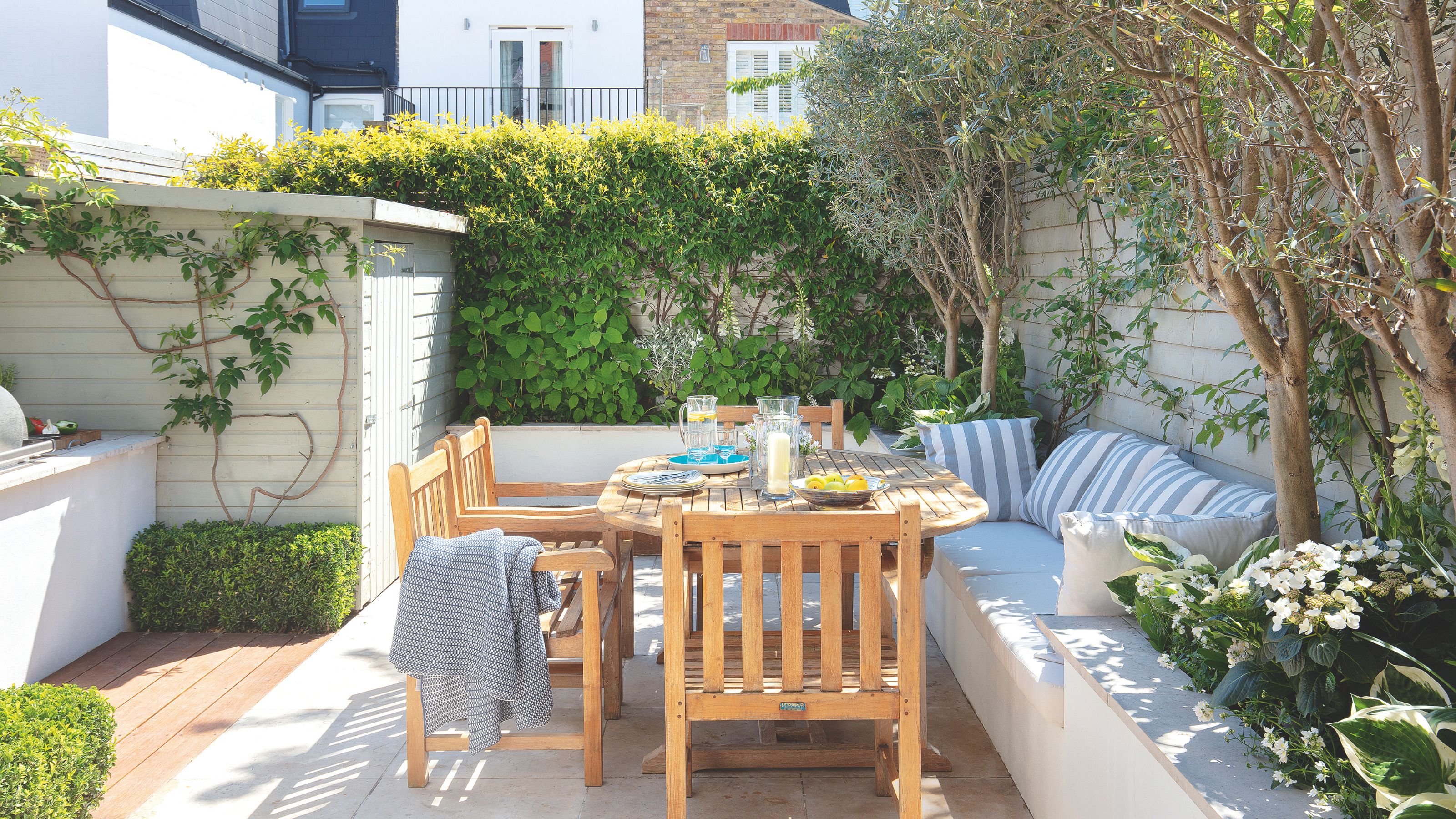
EDITOR’S NOTE: An earlier version of this article included a quote from a purported expert whose credentials we have not been able to verify. The quote has been removed. We regret this lapse in our verification process and have updated our internal protocols to reduce the risk of recurrence.
When it comes to garden border ideas, there's plenty of room for creativity.
Whether you're hoping to border your garden cheaply or you're looking for low-maintenance border plants to fill in the gaps, there's a long list of edging styles and planting techniques to experiment with. A border is the perfect way to frame and decorate the perimeter of a garden, so you'll want it to look as good as possible throughout the year.
We checked in with garden experts to compile a list of the best garden border ideas out there, from planting tips to colour scheme pointers.
When planting your garden border, consider the natural layout of your garden. Look at which parts of your garden get more shade and sun, how sheltered or exposed it is, and how wet or dry the area is. This will affect which plants will thrive in your garden and where in the garden they should be planted.
‘There are several reasons why people may want to add borders to their gardens,’ says William Mitchell, owner of Sutton Manor Nursery. ‘Garden borders can be a great way to highlight a specific area of the garden and make the layout more visually appealing. Another reason is to enable privacy within the garden, including for birds and wildlife that may be looking for shelter from predators or to breed and nest during the winter months.’
We've rounded up our favourite garden border ideas to give you a little inspiration.
1. Fill it with bulbs
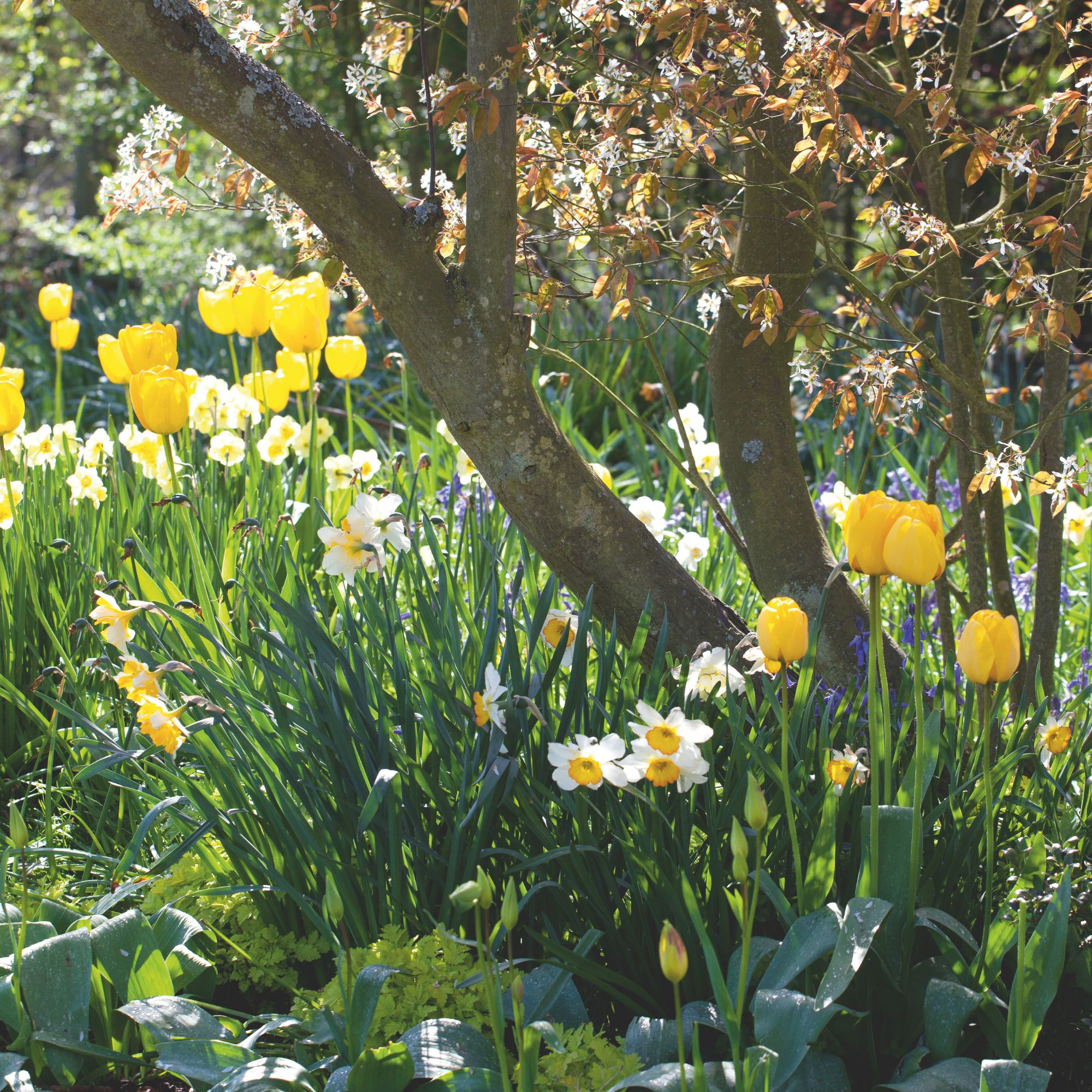
Once you know how to plant bulbs, the flowering world is your oyster. According to garden designer Harriet Worsley, planting spring bulbs is one of the easiest (and cheapest) garden border ideas.
Sign up to our newsletter for style inspiration, real homes, project and garden advice and shopping know-how
What's more? Daffodils, crocuses, hyacinths, alliums and other spring bulbs are perennial, meaning they'll burst into bloom every spring with minimal effort from you.
'Bulbs are your secret weapons for spring,' says Harriet. 'They cost little, and bring pure joy when they emerge out of winter’s chocolate earth and burst into flower.
'Go for sunshine yellow daffodils, delicate white snowdrops, and striped parrot tulips straight out of a still life from a Flemish painting — they will all be uplifting in spring.'
Plus, if you select the best spring bulbs for cut flowers, you can bring the blooms inside and enjoy them in the vase.
2. Define it with edging
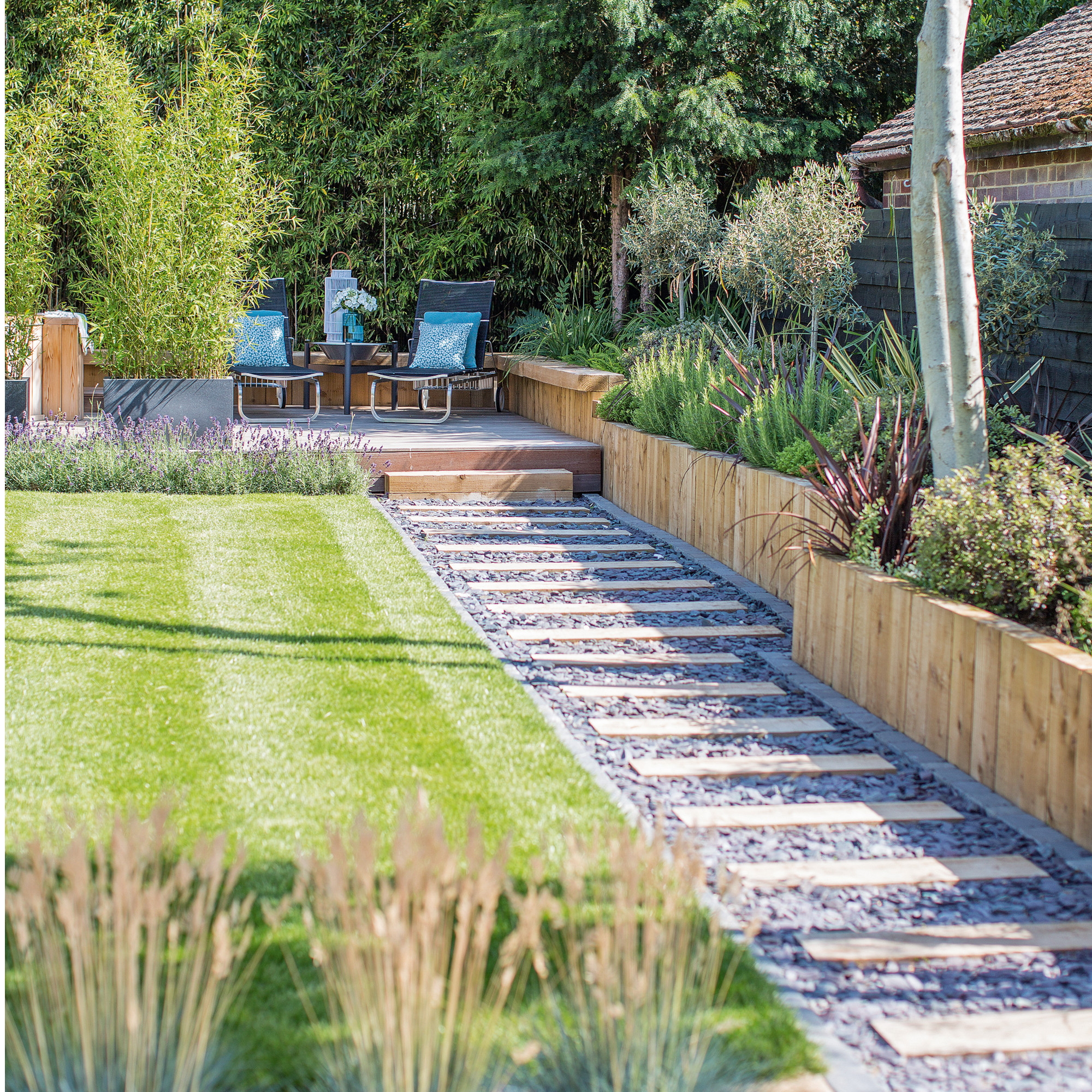
With the right garden edging ideas, you can define garden borders while making them look beautiful.
You might choose to form a natural ‘dip’ between planted-up soil and the lawn with a hoe, lay easy-to-use log rolling, or build low brick, stone, slate or rendered walls, typically painted in a complementary or contrasting colour to the planting scheme.
'Garden edging is a great way to separate sections of your garden, as well as create a nice border,' says Gary Jarman, building expert and director at Building Shop. 'Wood is a popular choice for edging as it's strong, sturdy and looks high quality.'
Always add clear edging to a border — even if it ends up overwhelmed with vigorous plants — or it will lack foundation and end up looking formless. A clear border edge will also make it easier to mow the lawn, especially with one of the best lawnmowers to hand.
Where to buy garden edging:
3. Grow a border of dahlias
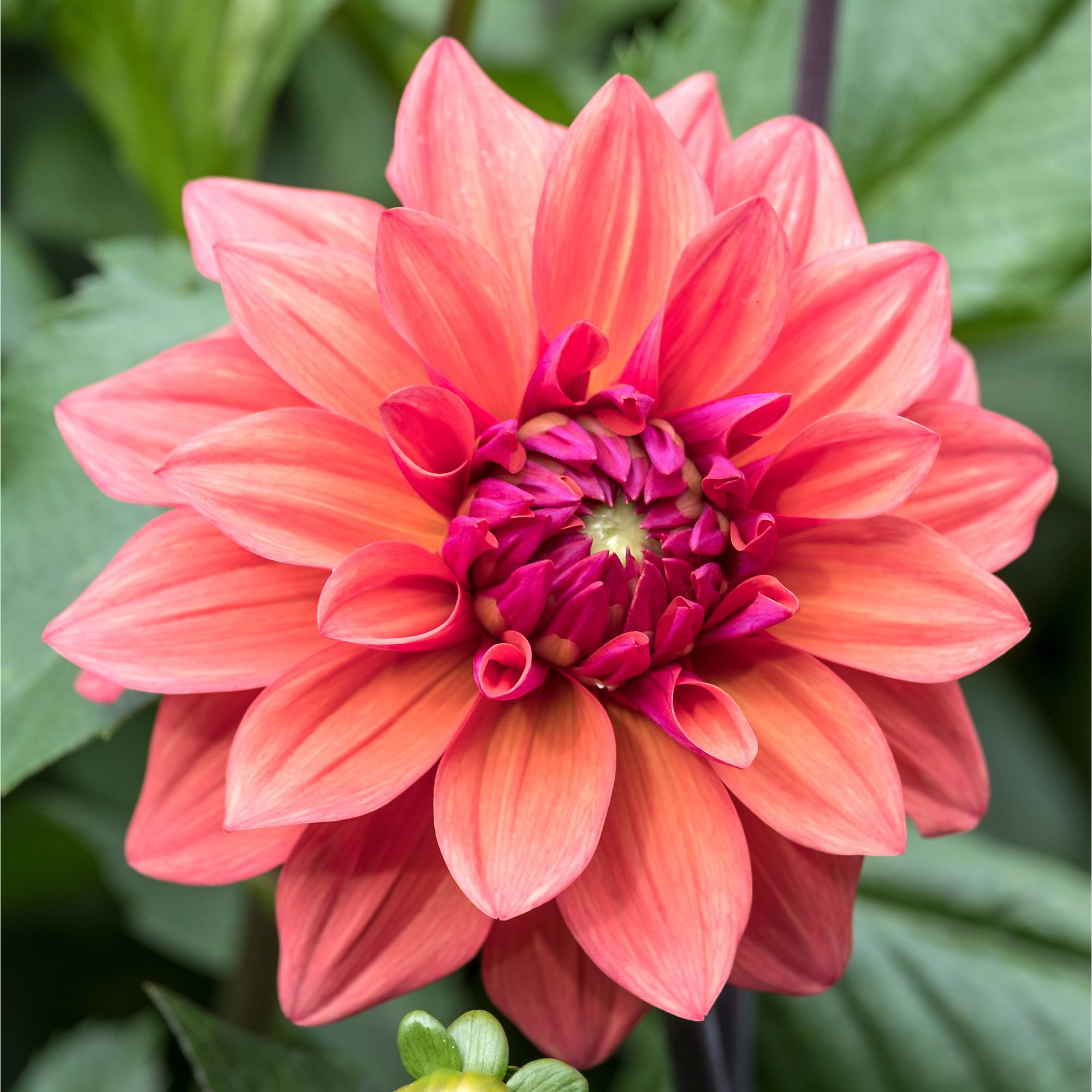
One of Ideal Home's gardens editor's favourite garden border ideas is centred around one flower in particular: dahlias.
With so many varieties to choose from, you can select the colour scheme, styles and shapes that best suit your garden. Plus, learning how to plant dahlia tubers is a piece of cake.
'Dahlias are not subtle, they are brash bold and beautiful, so don’t try to be elegant and refined with them,' Harriet says. 'Think abstract painting and splash on the colour. Look to the painters for a colour palette — Matisse, Van Gogh — and mass up the dahlias if you have the room.
'For inspiration, visit the walled garden at Houghton Hall in Norfolk, where there is a beautiful long border of just dahlias, like a vast river of colour.'
Garden expert and writer Sarah Raven just announced The Collective, a project involving dahlia collections from five leading tastemakers in the world of fashion, floristry and interior design. You can buy the tubers and grow the arrangements yourself!
4. Add volume with shrubs
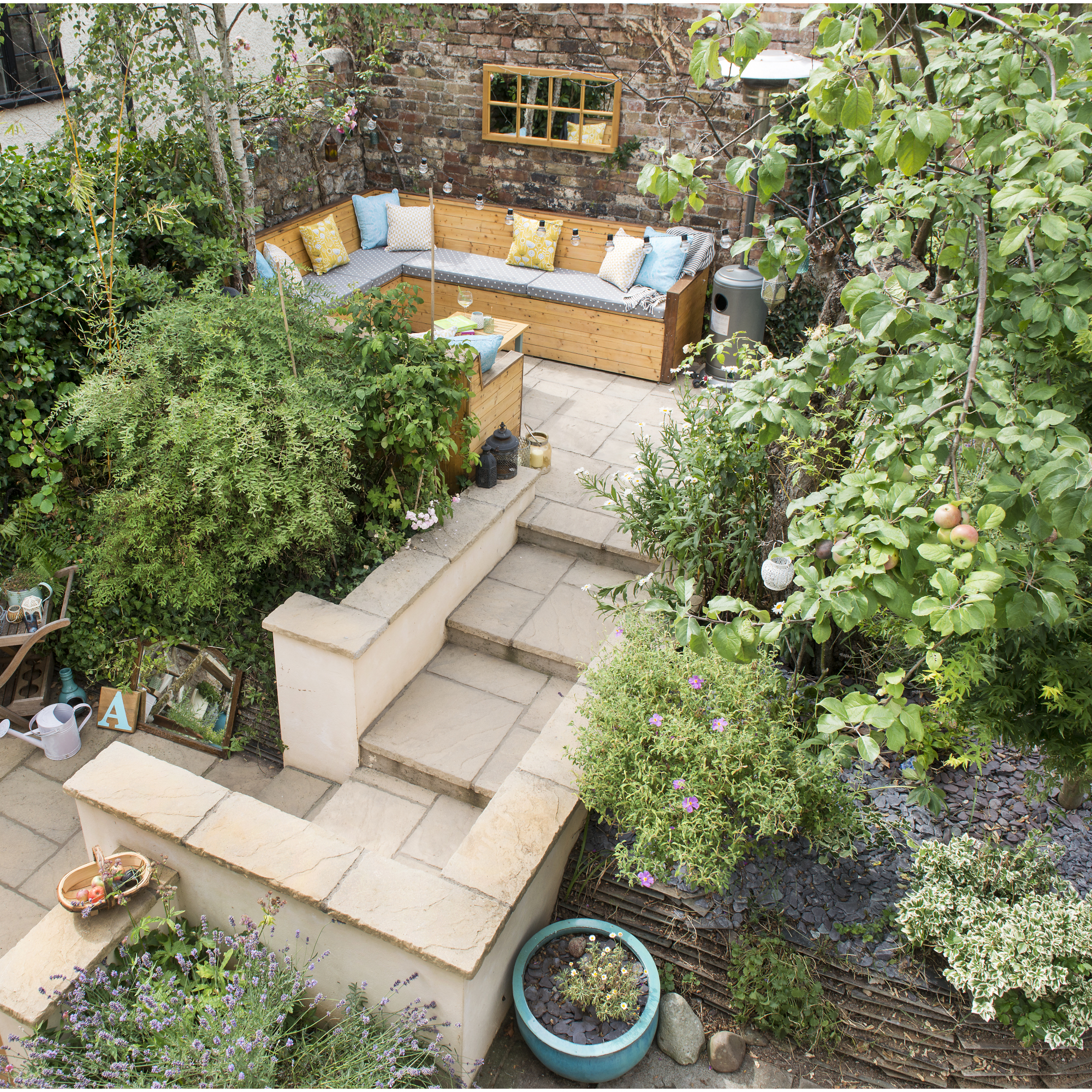
Whether you're looking for low-growing evergreen shrubs or fast-growing hedges, shrubs give your border structure while producing stunning foliage, flowers and even berries.
Popular, much-loved flowers such as roses, rosemary and lavender are, in fact, shrubs, and provide both beautiful colour and scent.
5. Choose flowering plants for all seasons
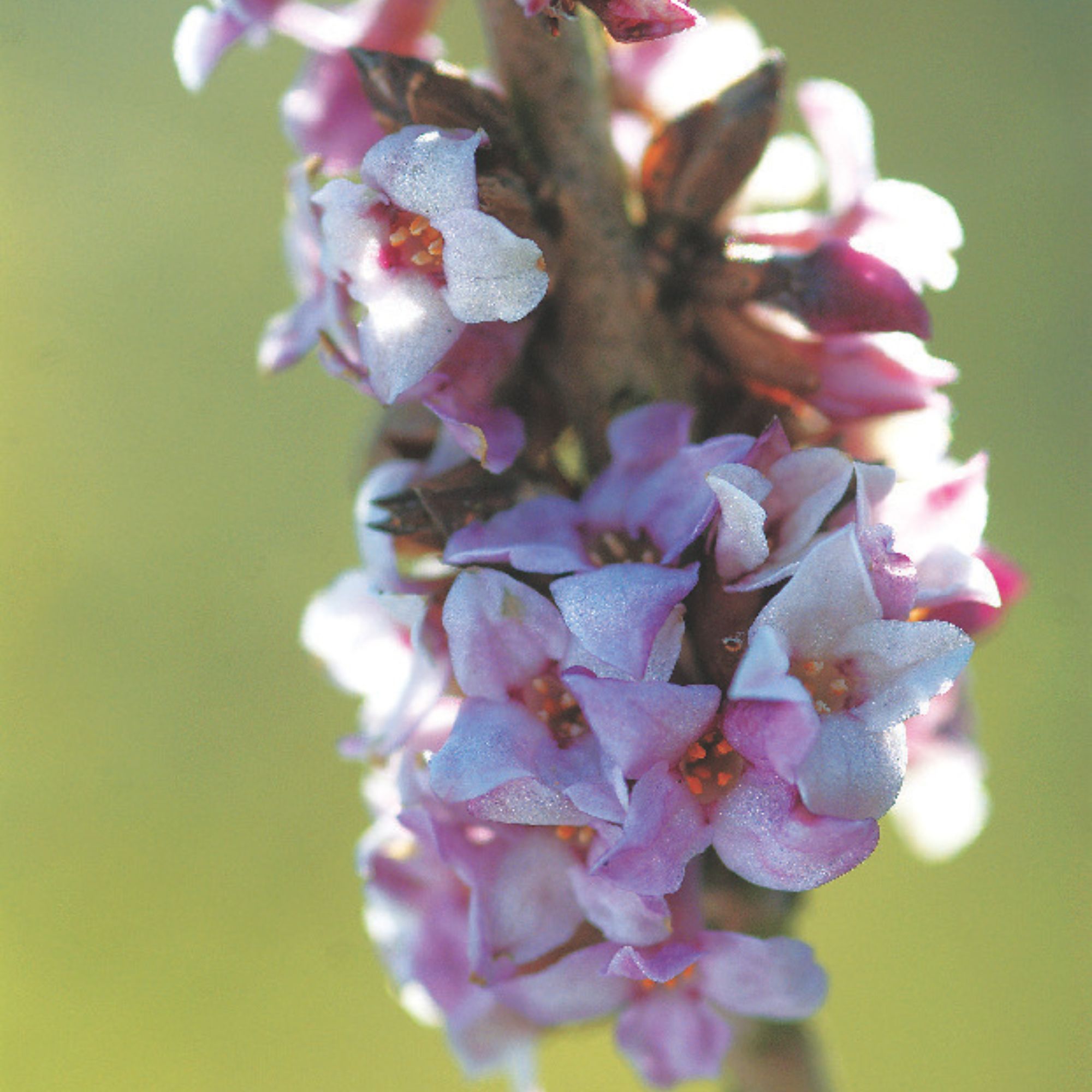
Speaking of shrubs — planting season-specific bloomers like autumn-flowering shrubs is a brilliant way to ensure your garden border ideas stay interesting throughout the year.
'Autumn-flowering shrubs bring a touch of joy to the garden just when we need it most,' agrees garden expert and writer Sarah Raven.
Winter-flowering shrubs like camellias and daphnes provide colour during the colder months when a lot of other plants have died down. You can buy winter daphne from J. Parker's and a range of other garden suppliers.
Many other perennials and annuals bloom during the coldest months of the year, too. Pansies and violas like Viola 'Sorbet F1 Midnight Glow' from Crocus provide a riot of colour during the winter, while snowdrops give pure white dots of colour and will often start to bloom even when there is still snow on the ground.
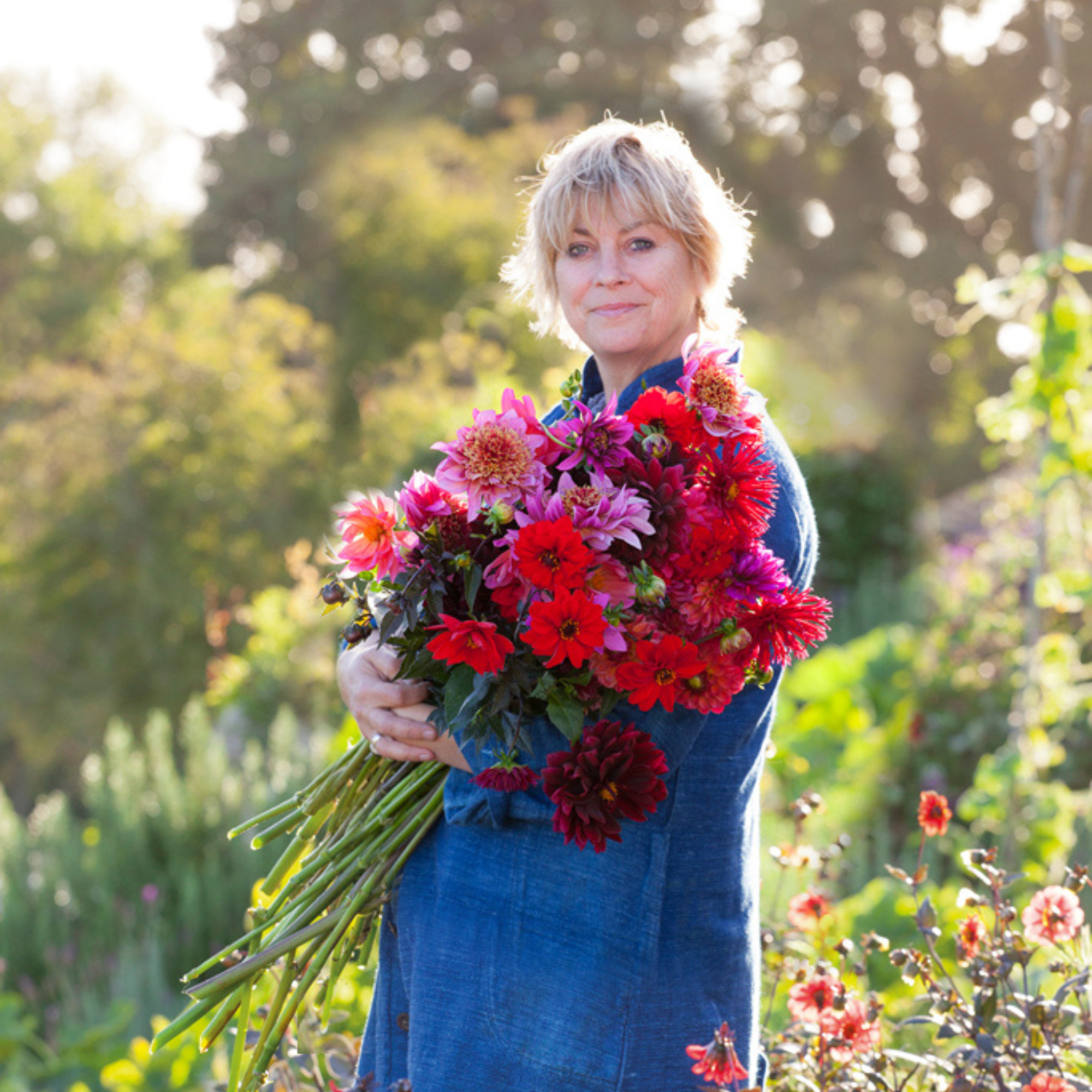
Sarah’s love of gardening extends to all areas, from growing cut flowers and delicious vegetables from seed, to designing stunning gardens packed full of variety, colour, and scent. Always with a focus on helping the environment and biodiversity, Sarah’s gardens are havens for birds, bees, and other pollinators.
Her popular gardening podcast ‘grow, cook, eat, arrange’ has achieved 4.3 million downloads. She’s published 14 books and runs sarahraven.com, which services over 600,000 customers.
6. Go low-maintenance with herbaceous perennials
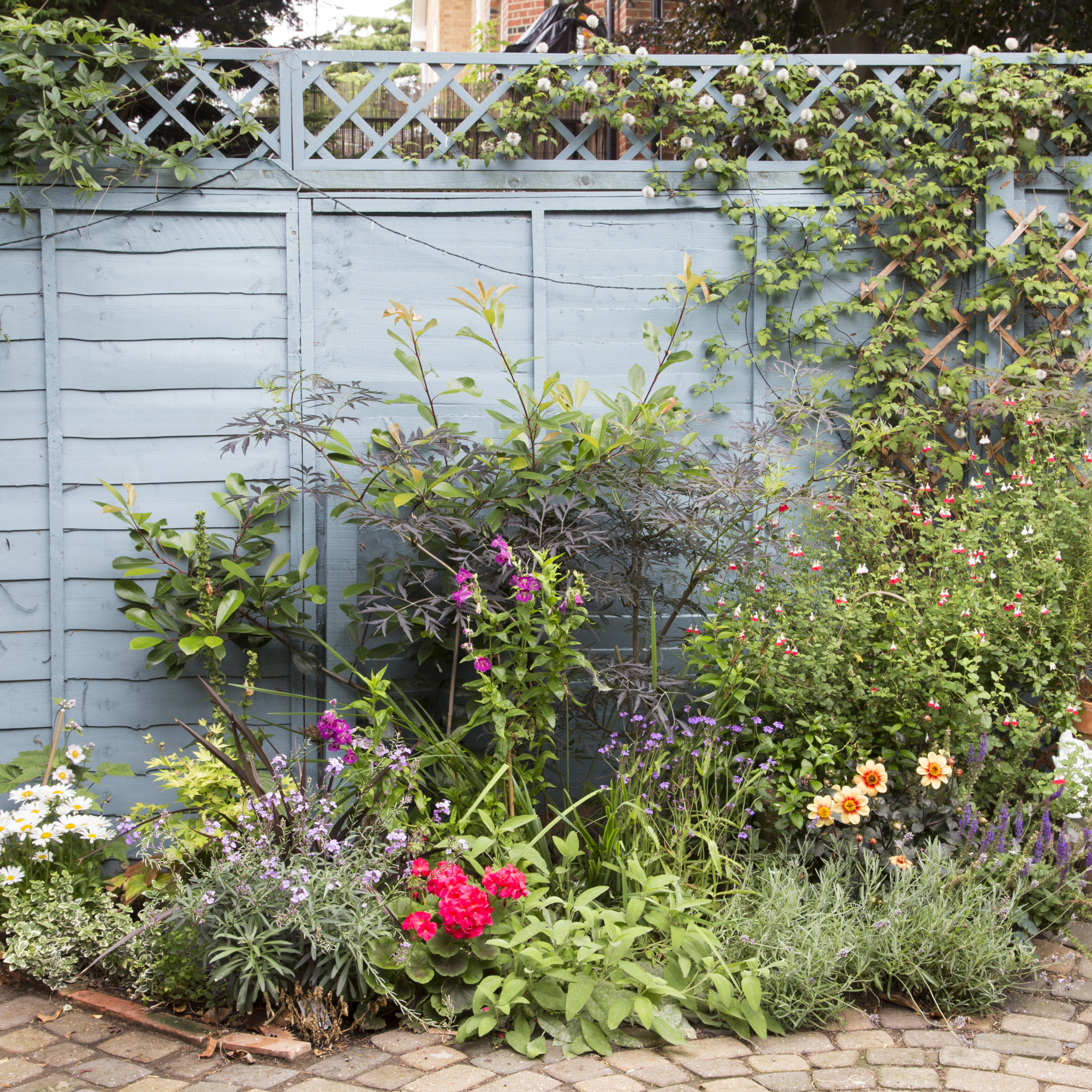
For easy garden ideas, having a low-maintenance garden border will allow you to sit back and enjoy its beauty without a lot of upkeep.
Perennial plants work best if you’re looking for plants that will come back year after year and only need a chop at the end of the flowering season. Nepeta is easy to care for, releases a beautiful fragrance, and has silver foliage with blue-violet flowers that last for months.
For something close to the ground, Nepeta 'Walker’s Low' has deep violet flowers and works well at the front of borders spilling out onto pathways or patios. Hardy geraniums such as 'Rozanne' and Geranium psilostemon fill in gaps by knitting between plants to give you a consistent sea of colour.
‘Herbaceous plants like delphiniums, poppies and lupins make great choices for garden borders, too, as they will provide you with a gorgeous range of colourful flowers for a showstopping look,' adds Marcus Eyles, horticultural expert at Dobbies.
You can buy Lupin 'Russell Hybrids Mixed' from Thompson & Morgan as bare root plants or potted plants.
7. Create a wildflower border
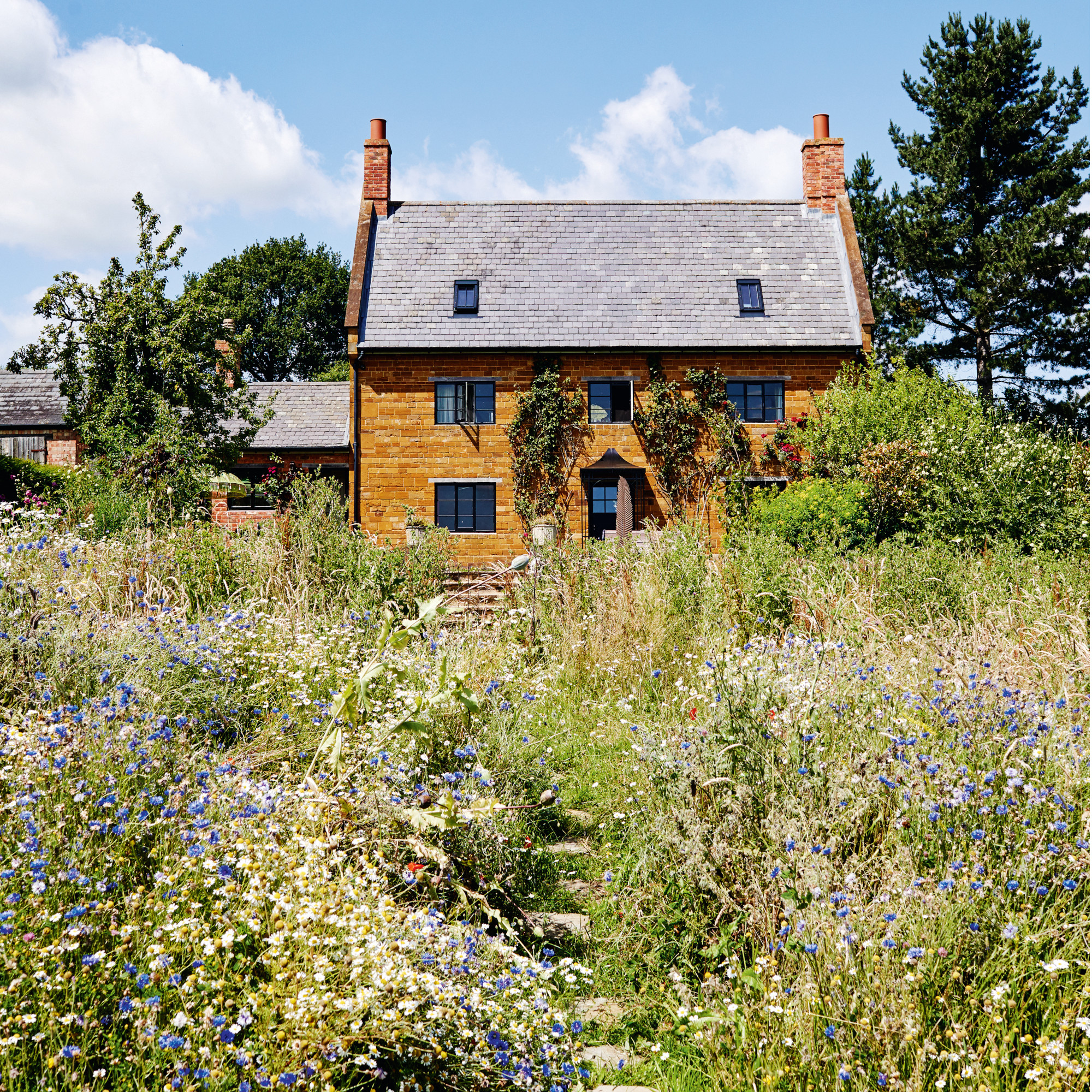
If you're looking for wilder garden border ideas, wildflowers are a stunning choice. They're loved for their versatility and low maintenance, and perfect for encouraging bees and pollinators to visit your garden.
Autumn is the best time to create a wildflower meadow and flowers such as yellow rattle, birds-foot trefoil, common sorrel, ox-eye daisy, red campion, red clover and yarrow and wild carrot are the best for your wildflower border. Wildflowers are usually perennials so they will die back in winter and regrow each year.
The wildlife benefits continue after they've finished flowering, too. 'We recommend leaving the stems to collapse and decay naturally,' says Dr Emily Lambert, co-founder of Seedball. 'Doing so creates valuable habitats for insects to overwinter in. Seedheads will scatter across the patch, creating food for birds as well as seeding the earth ready for next year.'
Seedball's Wildlflower Seed Bombs from Amazon will give you a profusion of butterfly- and bee-friendly blooms.
8. Vary the height of your planting
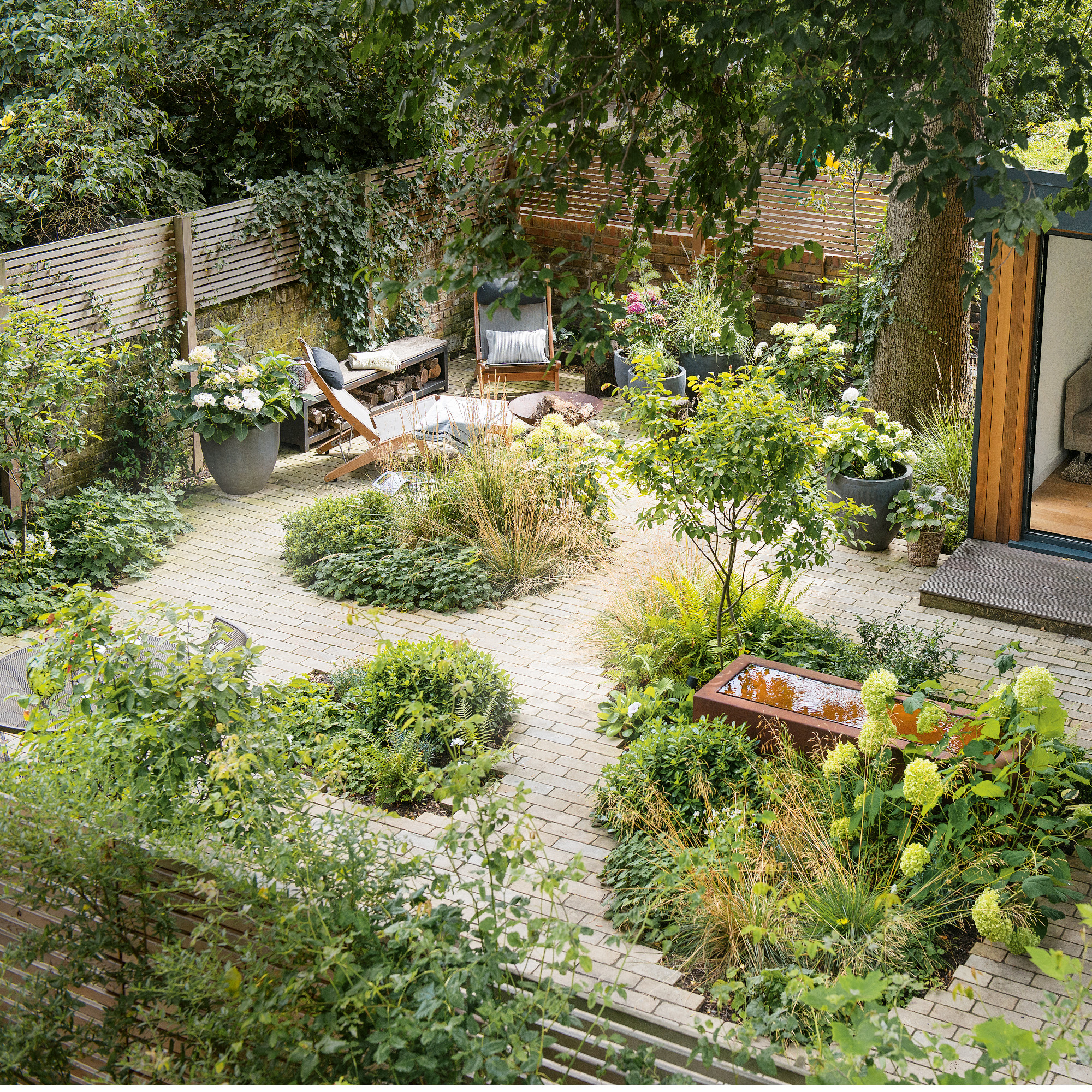
Without undulations in height, your garden border ideas can look flat and one-dimensional, so when thinking about how to plan a garden, use tall and short plants within your border.
Daniel Carruthers, director at Cultivar Greenhouses, says, ‘Placing taller plants at the back of the border and shorter ones at the front will not only allow each plant to get enough sunlight but will also create a more attractive aesthetic, as taller shrubs and climbers will draw the eye up, while beautiful blooms will edge the bed.
'Taller flowers, such as alliums and gladioli, will add both colour and height, and adding some topiary for structure, such as a box or yew ball, will add year-round interest when some of the flowers have died back.’
For shorter plants that can fill in the sparse gaps at the front of your border, consider ferns, which are easy to maintain and provide lush greenery. Other good choices include catmint and hardy cyclamen.
9. Make use of bamboo
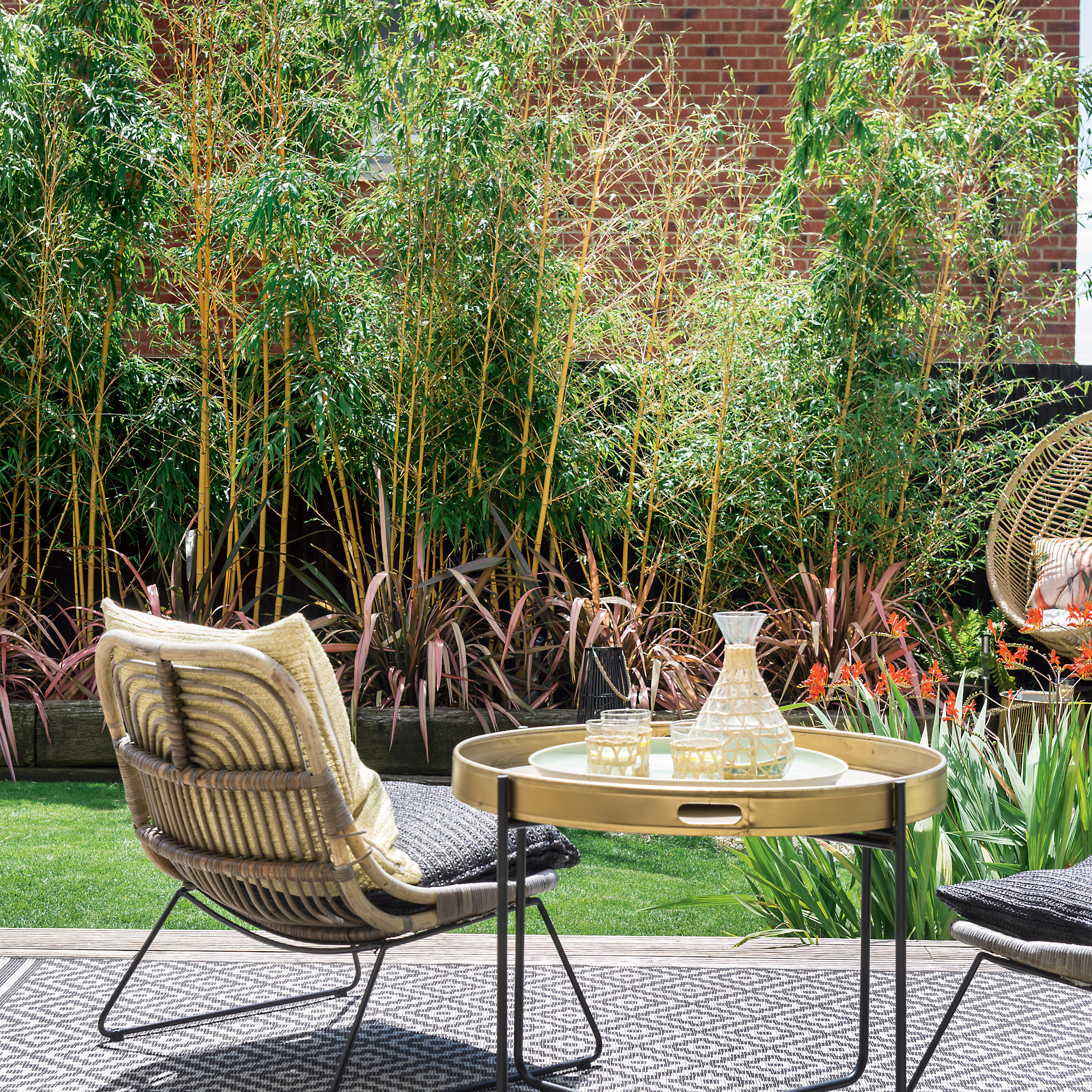
Giving your garden a tropical makeover, bamboo will make you feel like you’re abroad. Bamboo is easy to grow and very hardy, so it works well in British garden borders and compliments garden decking ideas.
Bamboo is ideal for creating focal points in your garden, providing height and movement to your border, and acting as a windbreak for smaller plants. For garden border ideas, clump-forming bamboo works best because it spreads slowly and won't grow out of control and take over the rest of your border.
‘If you want something a bit more unusual for your border, then you might want to consider using bamboo,' says Jack Sutcliffe, co-founder of Power Sheds. 'Not only are they visually appealing, but they can last for years if given appropriate maintenance.'
10. Highlight your border with lighting
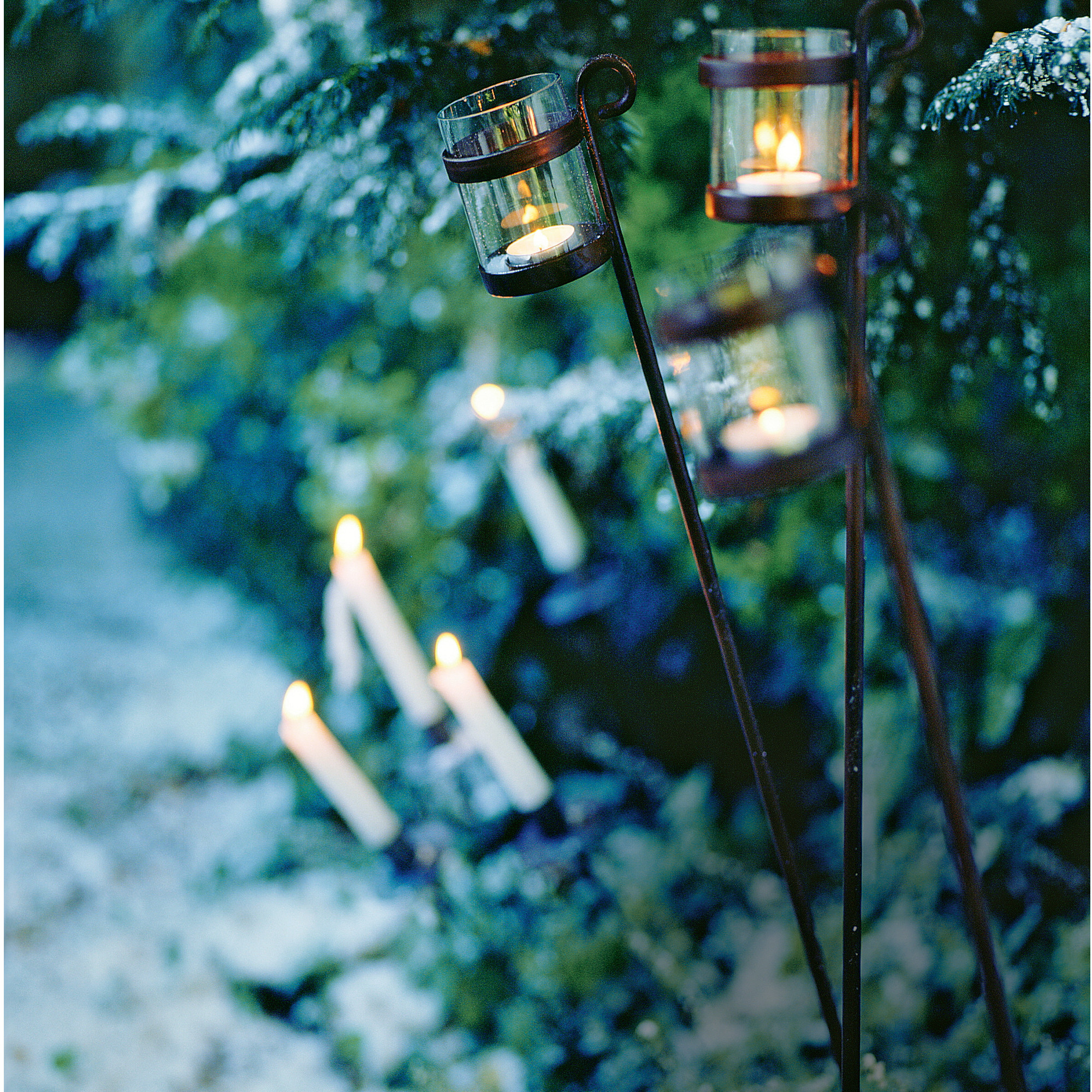
Tucking in lights among your border creates a beautiful ambience and allows your garden border ideas to shine at night. Discrete ground light can give gentle illumination and highlight the form and structure of your border.
‘Why not accent your favourite features with fairy lights?' says Deborah Cobb, product manager of landscaping at MKM Building Supplies. 'Or, you could consider placing small lanterns around and through your flower and vegetable patches or using lights under your trees with large branches, creating enchanting and dramatic silhouettes when the night draws in.'
When using garden lighting ideas within your border, keep the coverage of the lights symmetrical so that it illuminates the entire border evenly and there are no dark or overly bright areas. The 4lite Antheia Solar Outdoor Spike Lights from Amazon are ideal for borders.
11. Plan a colour scheme
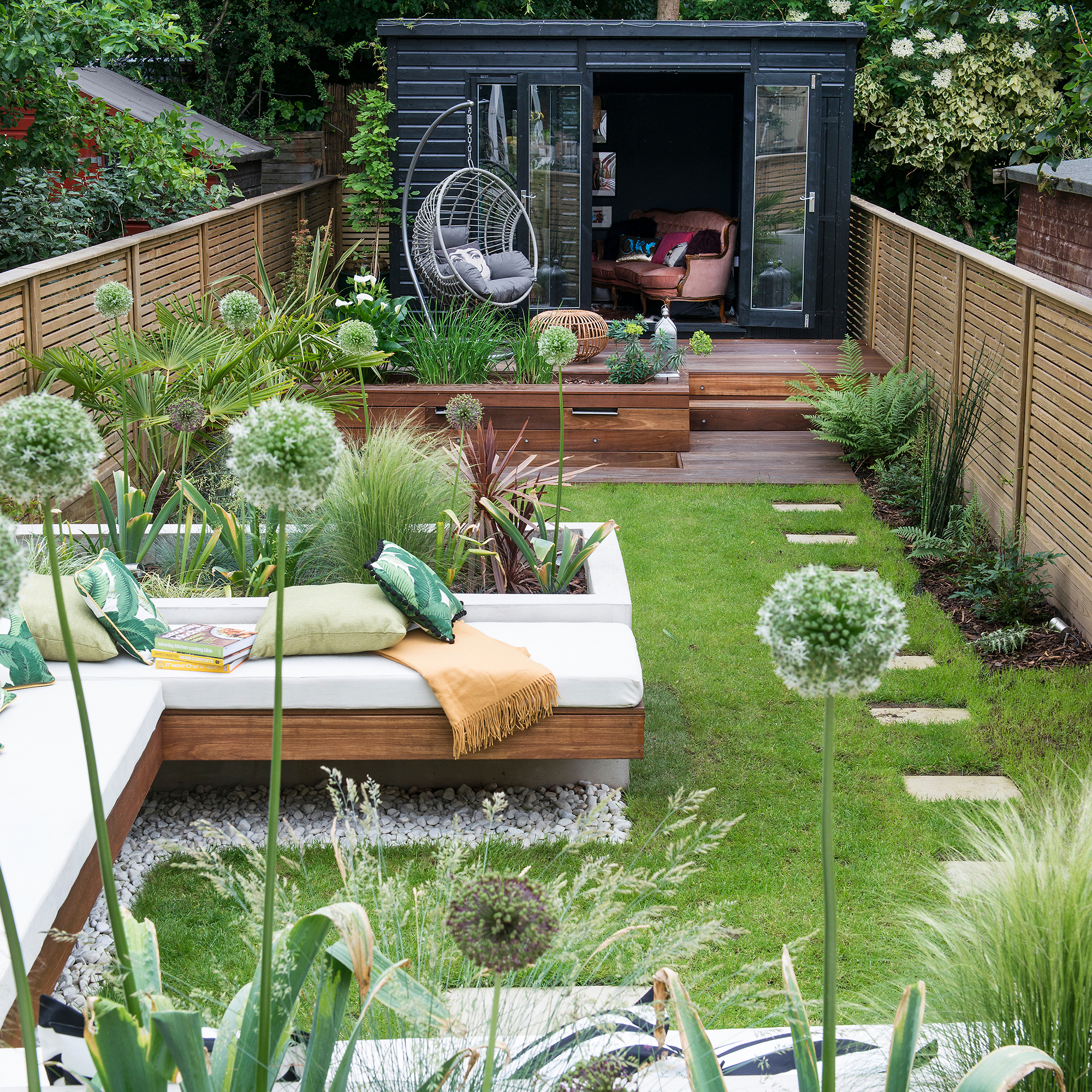
Sarah Raven says the best way to start planning garden border ideas is to collect together a bunch of catalogues from good suppliers and print-outs from online magazines and websites, too.
'Cut out your favourite colours and forms of plants,' she says. 'Checking their seasons of flowering and their heights are compatible, combine your items on a large sheet of paper with blue tac so you can easily shift things around.
'Then, refine this with one main colour, with a large and showy flower — I call this my bride — and then something in a very similar colour or tone which is a little smaller or more demure — that’s the bridesmaid.
'Finally, scatter a colour contrast through to bring the whole thing to life — I call this the gate-crasher. You need this bit of zest, rather than pure harmony. Use that as the basis of a new border and spread out from this core of three plants.'
12. Divide areas with borders
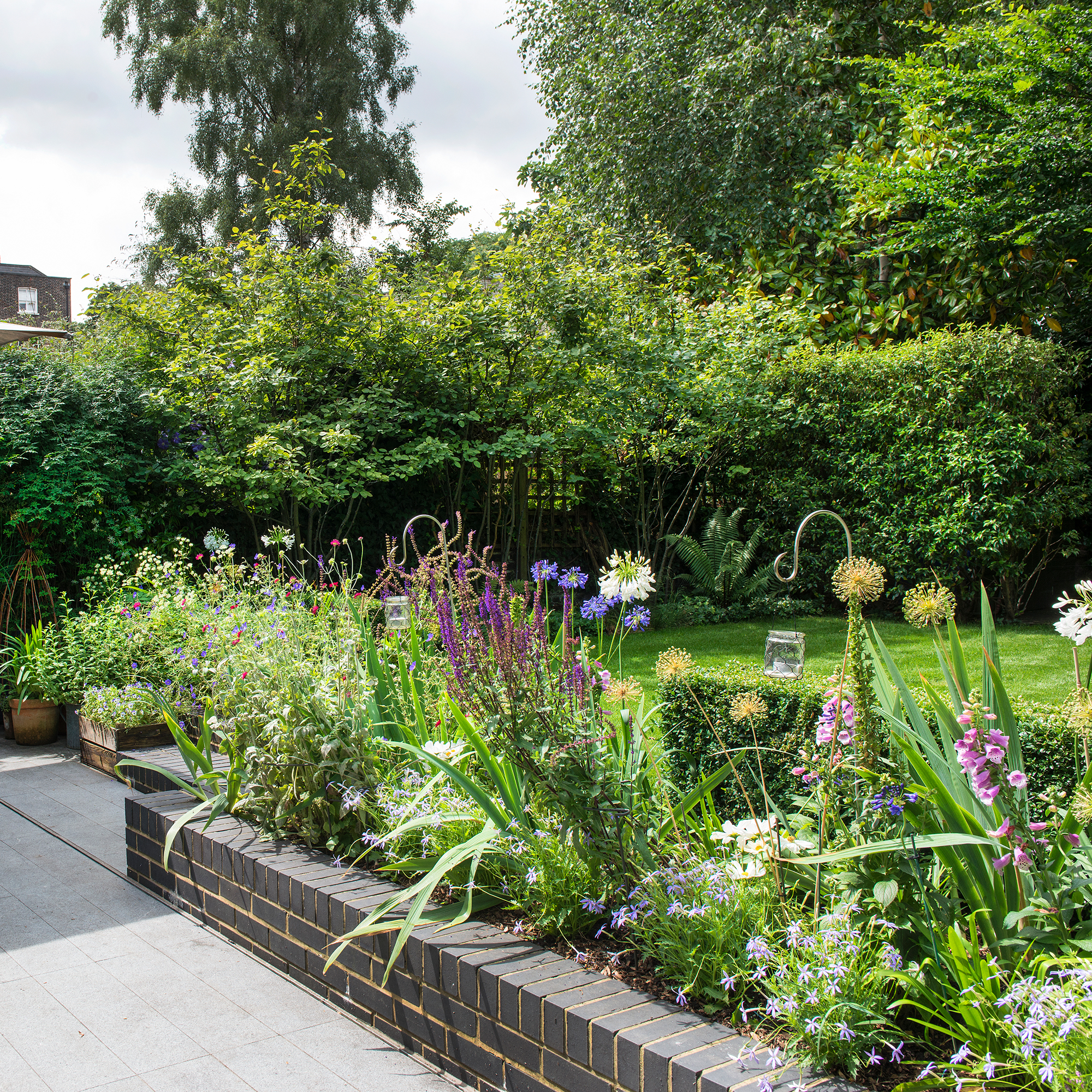
As well as looking gorgeous, borders carry out a serious structural purpose in the garden. They work alongside hard landscaping elements like decking and patio, and they give a clear outline to lawns, bringing form to the space. That's why they're a key part of garden layout ideas.
'When designing your border, consider the other colours around,' says Nathan Gamba, director at Protea Gardens. 'Contrasting colours give a striking look and can help each element to stand out clearly. 'I always feel that borders accentuate a strong design feature of any garden.'
13. Use the fence
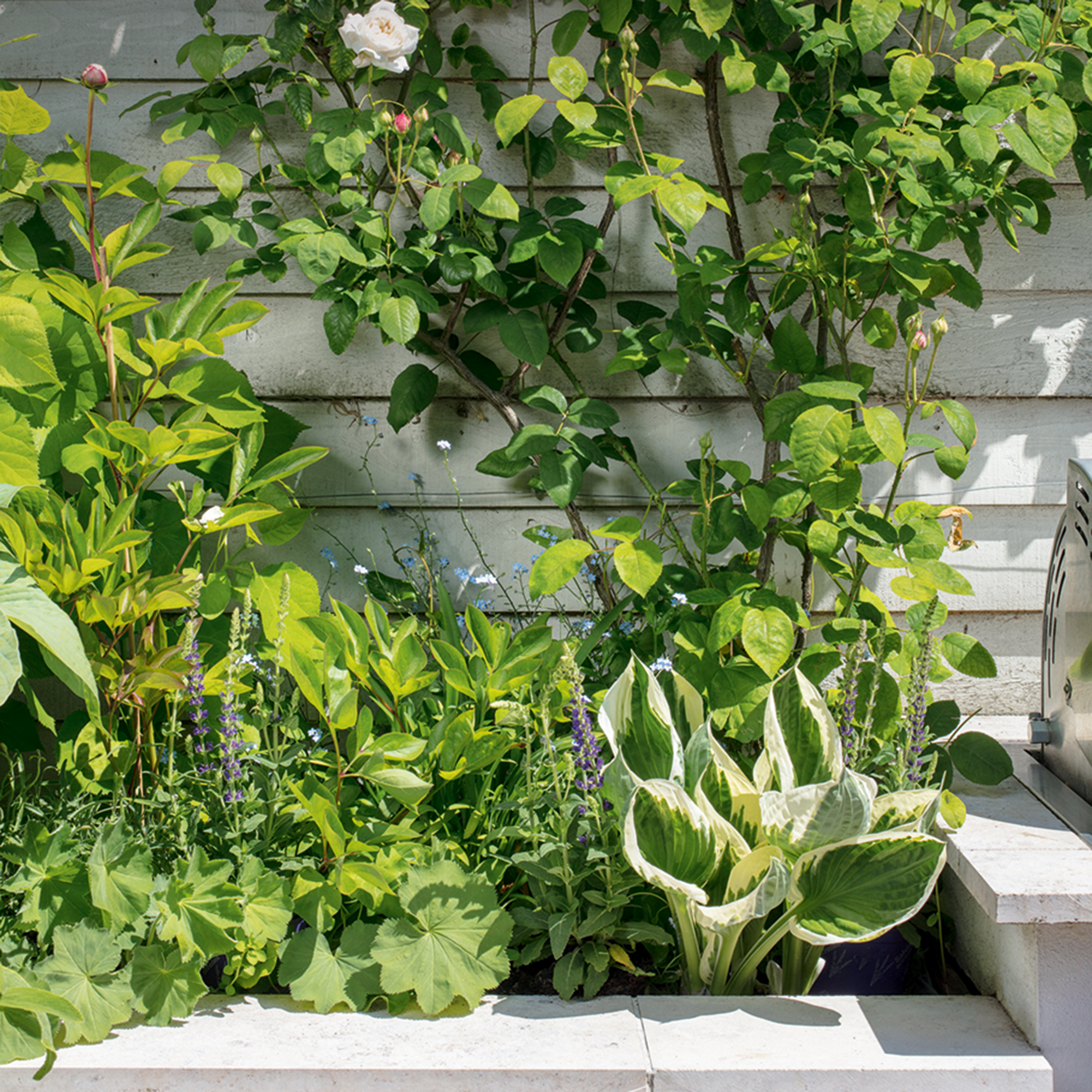
You don’t need a huge area to introduce effective garden border ideas. It’s possible to create a neat growing space by building a border in front of a stylish fence.
So, if you’re interested in garden fence ideas and really want to make the most of every centimetre of space, consider a border which, as well as showing off colourful blooms and interesting foliage, holds a fast-growing climbing plant like clematis or honeysuckle to scurry up the fence in no time. Try Clematis 'Montana Mayleen' from Gardening Express for a flurry of pink flowers.
14. Don’t be afraid to add drama
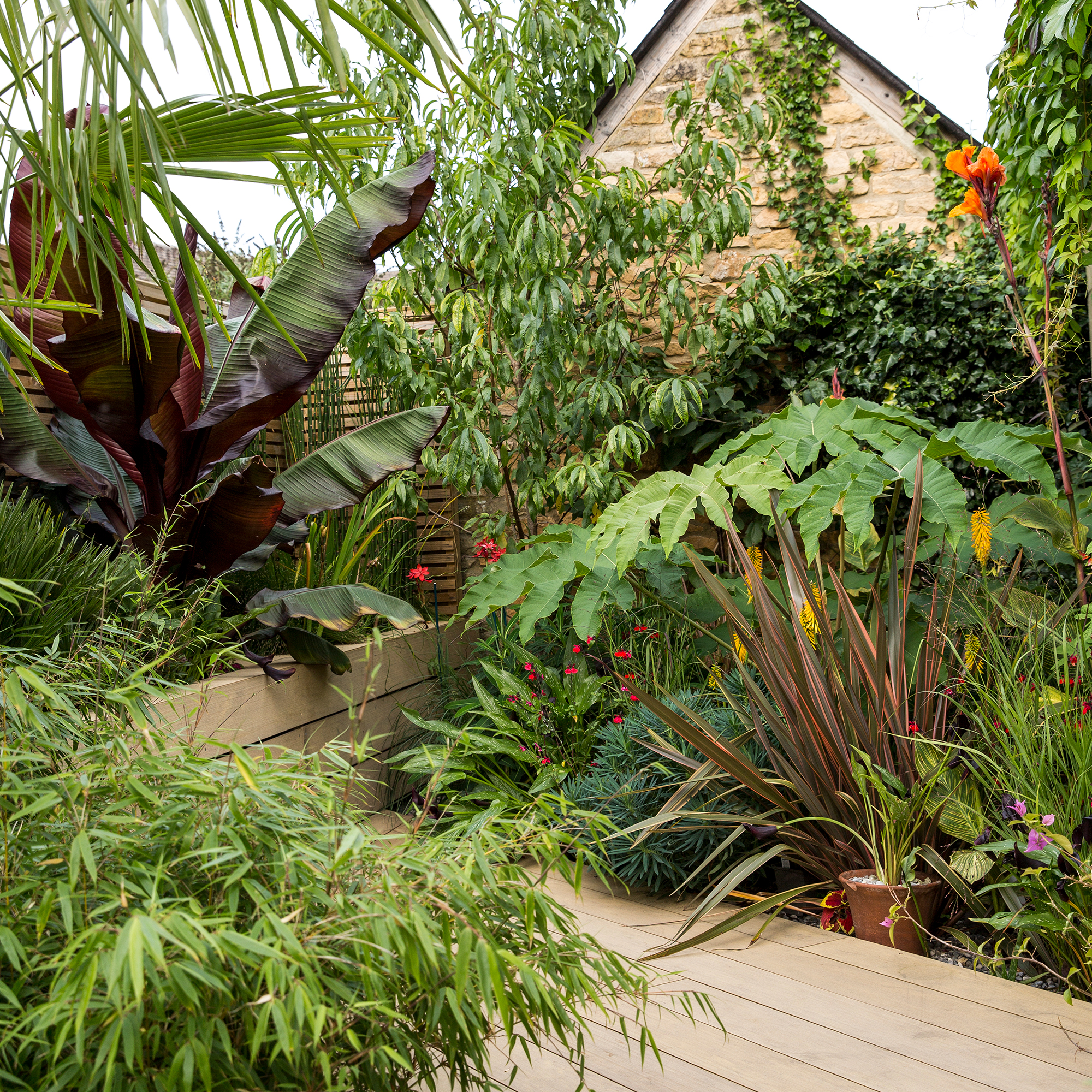
The best garden border ideas should offer an element of surprise. So, contrast dramatic exotic shapes such as banana trees, spires and ‘see-through’ shapes.
'But don’t use too many different plants — restrict your choice of varieties, repeating them rhythmically at intervals,' says Annelise Brill, a horticultural expert at Thompson & Morgan.
A good rule of (green) thumb is to add border plants in odd numbers, as this will help to create a pleasing sense of continuation. Sarah Raven says that she never plants just one of each kind of plant: 'Ideally, more like three or five so you have impact and pizzazz, rather than an overall fussy and dotty effect.'
15. Learn to love naturalistic planting
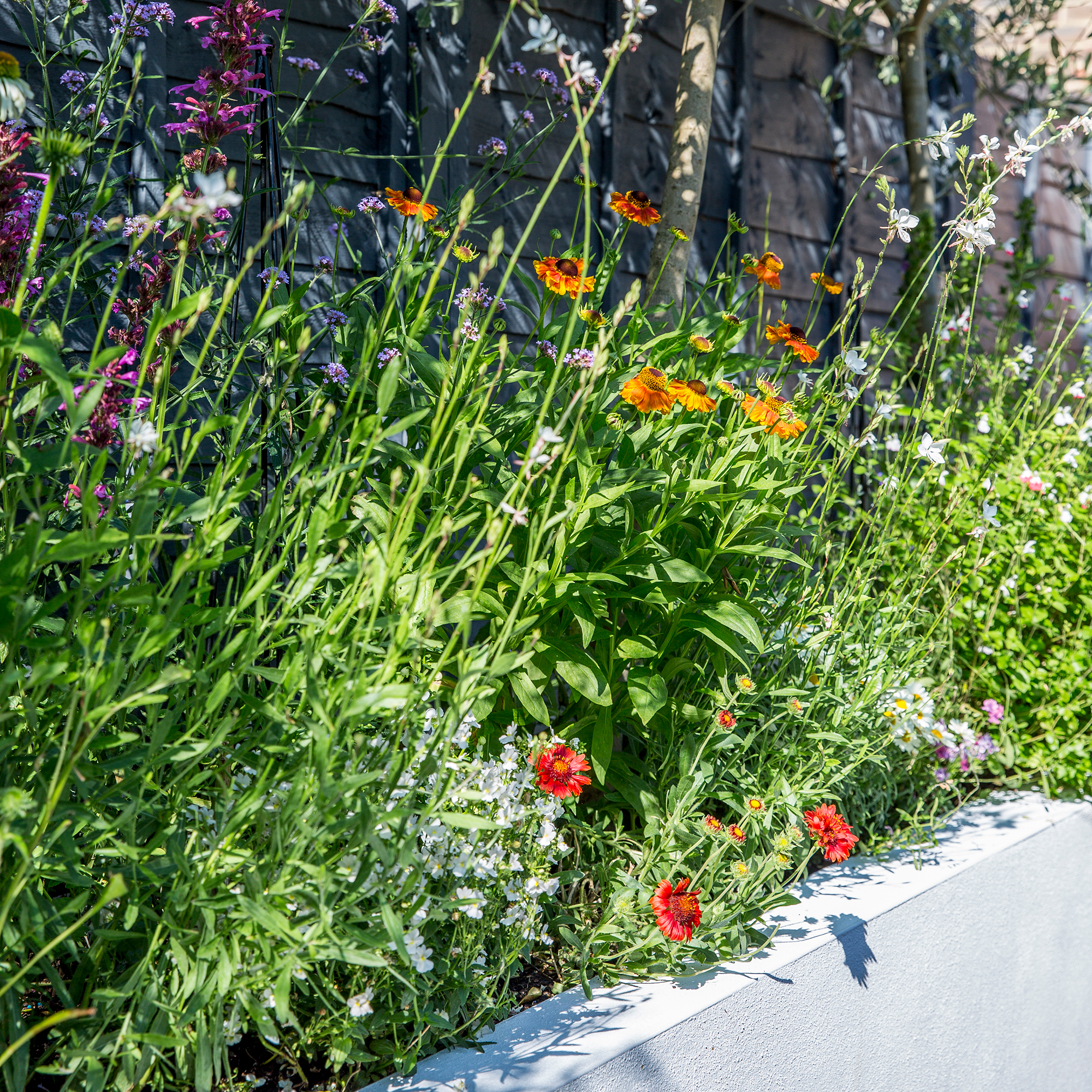
If you’re worried about a border requiring constant maintenance, embrace naturalistic wildlife and pollinator-friendly planting. If you're after a cottage garden idea, this could be the option for you.
Cottagecore is set to be a huge garden trend again this year, so it's the perfect time to jump on the bandwagon. Try roses, wild strawberries, jasmine and wild honeysuckle in romantic shades of pink, white and cream to nail the aesthetic. It's also a good idea to mix in herbs, fruits and vegetables amongst the flowering plants for ultimate cottage garden appeal.
16. Put pots in borders for instant impact
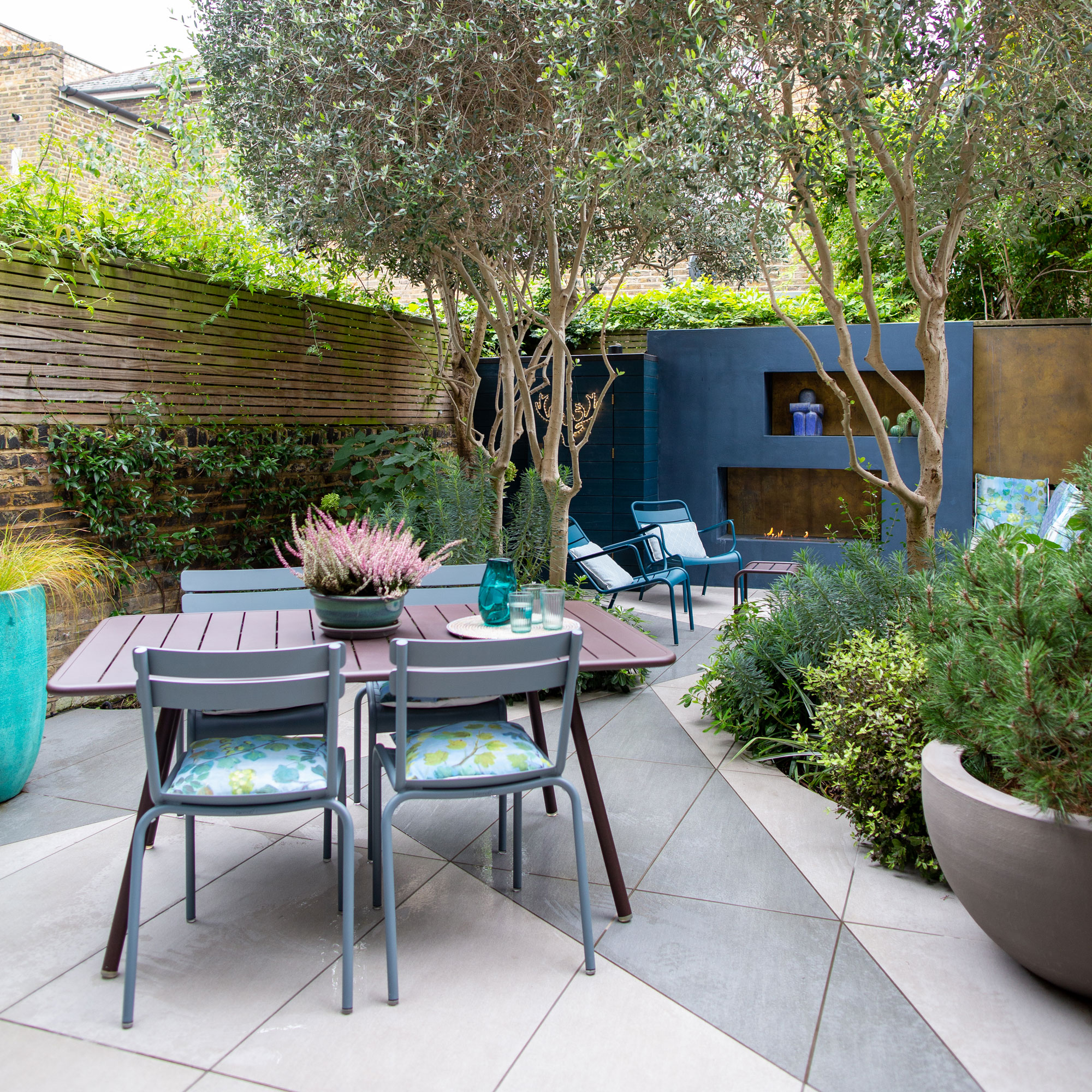
A quick fix for any garden border, especially in the awkward times in-between seasons, is to play with the potential of pots. To make pots work effectively when bringing your garden border ideas to life, you need to think about how to enhance the bigger picture. Avoid cluttering up with too many small planters. Go for impact, with stately palms or bright displays of tulips in springtime.
'Use the biggest possible pots if you want to enhance your borders — as large as you can possibly afford and fit in the space,' says Sarah Raven. 'Raise them up on a plinth or top them with a woven silver birch or tied bamboo cane tepee, which you can cover with one of the quickly-growing annual climbers such as thunbergias, impoaeas, cobaea or rhodochiton.'
This added height is a great trick to use for small gardens, where planting space is at a premium.
17. Make the most of shady borders
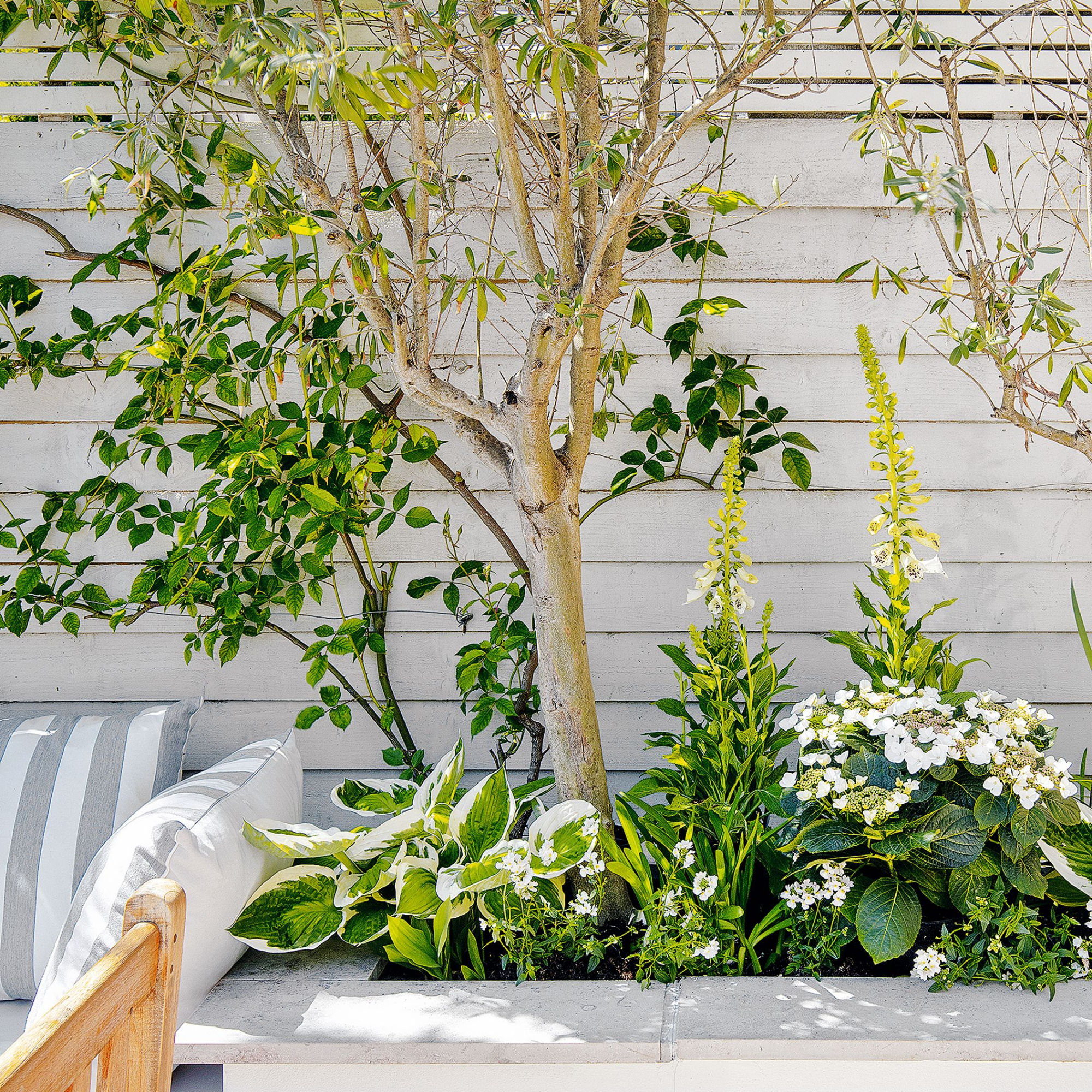
Don’t discount shady, north-facing garden ideas or overlooked spaces which could be transformed into a border. Choose plants carefully, paying particular attention to whether you have ‘dry’ or ‘damp’ shade, as shade-loving plants such as ferns and hostas are often fussy.
If you’re keen to add colour, easy-to-care-for hydrangeas are a good choice; white blooms against glossy green foliage look great. Hydrangea serrata 'Avelroz' from Thompson & Morgan is easy to grow and produces delicate pink flowers from July to September.
18. Plan for year-round planting with evergreens
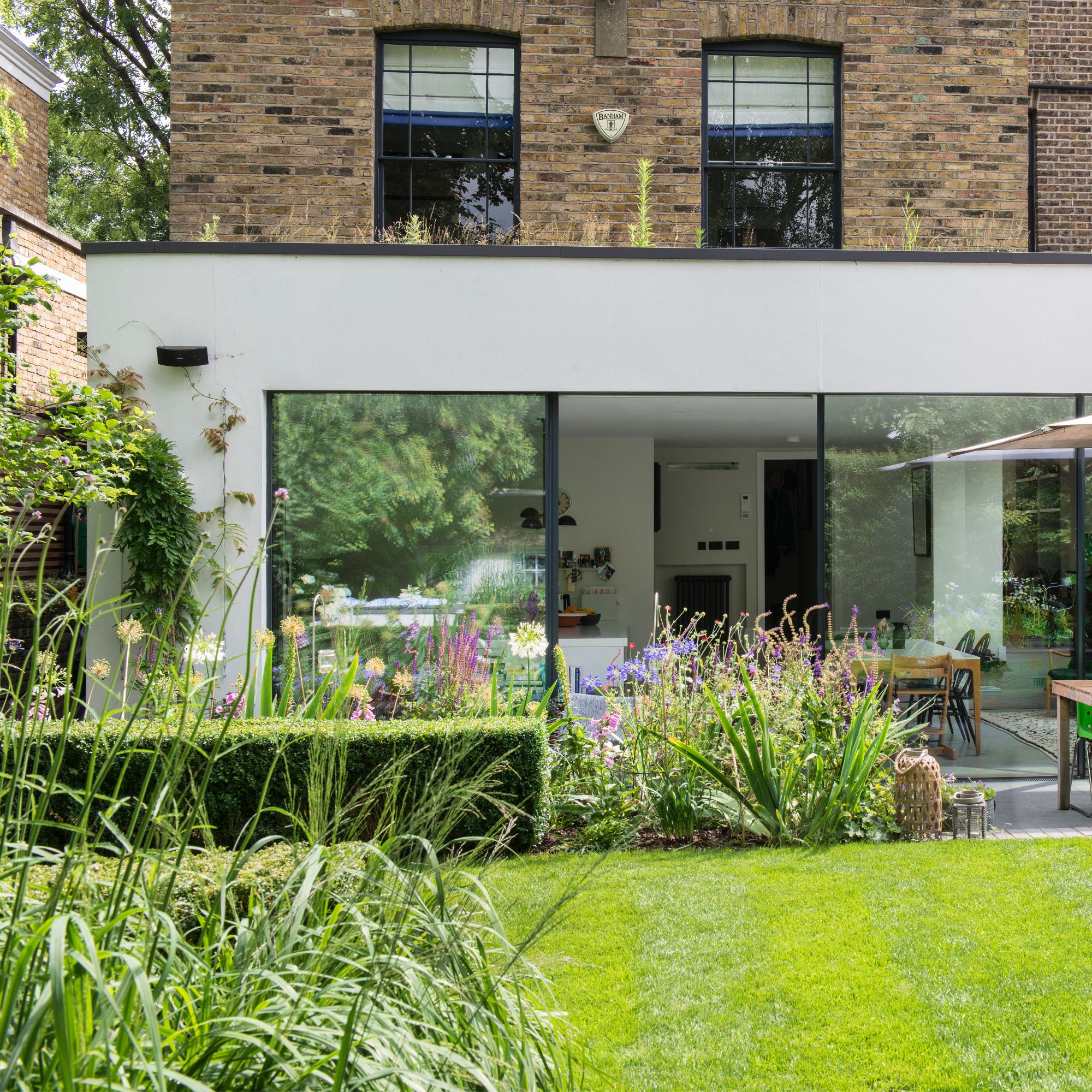
The holy grail of garden border ideas is to create a display that looks good whatever the time of year. This can be a challenge, especially with a new border that will take time to establish itself.
Think of your late autumn and winter border as a framework. 'Start by allowing space for plenty of evergreen foliage such as ivy, boxus and hebe,' says Annelise from Thompson & Morgan.
'And remember, when you’re planning, to leave several holes for bulbs and annuals, which you can plant throughout the year in drifts to add extra colour, even in the gloomiest months of January and February.'
FAQs
How do I make my garden border look nice?
The great thing about garden border ideas is that there are plenty to choose from. But garden designer Harriet Worsley believes that less is more.
'Make a plan, use repetition and think of colour, form and leaf shape,' she says. 'We are conventional, and it pleases the eye when shapes, colours and specific plants are repeated in a garden space. It’s best to choose multiples of the same plant, rather than dot single different plants around a garden.'
It's also a good idea to experiment with texture when selecting plants for a garden border. 'Contrasting leaf shapes create interest — so try a wide, round-pad leaf next to a plant with a tall, strappy leaf shape,' Harriet says. 'Then, repeat further down the border.
'And don’t forget the scent — this is important in a garden. It’s not just about how it looks, but how it smells, how it feels and how it sounds.'
What is the cheapest way to fill a garden border?
Creating a garden border which looks good, has structure and will provide foliage and colour all year round doesn’t have to break the bank. To stick to your garden budget, don’t feel like you need to create a whole new border — simply sprucing up your existing one will bring a new lease of life to your garden.
‘If you are using planting to create a border, consider choosing flowers that may not necessarily be on trend to keep things less expensive,’ says Lewis Darley, content creator at NeoTimber.
Jenny Davis, marketing manager at Forest Garden, says, ‘Decide how much space you want to dedicate to a border and then get digging. Taking on all the labour yourself will keep costs to a minimum and will allow you to invest all your budget in materials including good quality soil, a selection of seeds and plants and a structure or two around which you can plan your border.’
Which garden border ideas will you be trying this year?

Jayne Dowle is an award-winning freelance gardening, homes and property writer who writes about everything from swimming ponds to skyscraper apartments, for publications including Sunday Times Home, Times Bricks & Mortar, Grand Designs, House Beautiful and The Spectator. Awarded the Garden Journalist of the Year accolade at the Property Press Awards in 2021, she has a degree in English Language and Literature from the University of Oxford and a lifelong love of homes, interiors and gardens.
- Sophie KingGardens Editor
- Imani CottrellContent Editor
